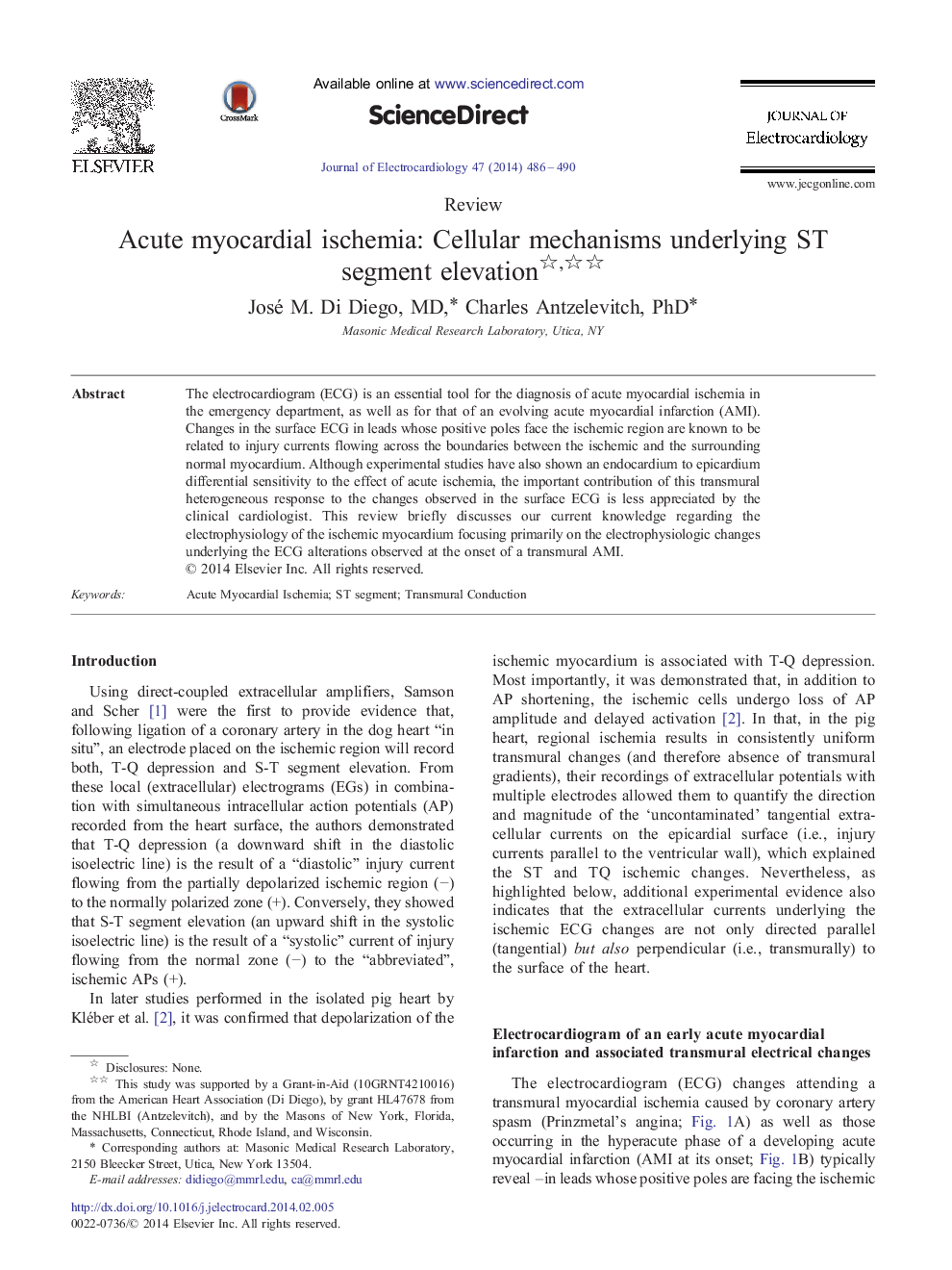| Article ID | Journal | Published Year | Pages | File Type |
|---|---|---|---|---|
| 5986497 | Journal of Electrocardiology | 2014 | 5 Pages |
The electrocardiogram (ECG) is an essential tool for the diagnosis of acute myocardial ischemia in the emergency department, as well as for that of an evolving acute myocardial infarction (AMI). Changes in the surface ECG in leads whose positive poles face the ischemic region are known to be related to injury currents flowing across the boundaries between the ischemic and the surrounding normal myocardium. Although experimental studies have also shown an endocardium to epicardium differential sensitivity to the effect of acute ischemia, the important contribution of this transmural heterogeneous response to the changes observed in the surface ECG is less appreciated by the clinical cardiologist. This review briefly discusses our current knowledge regarding the electrophysiology of the ischemic myocardium focusing primarily on the electrophysiologic changes underlying the ECG alterations observed at the onset of a transmural AMI.
